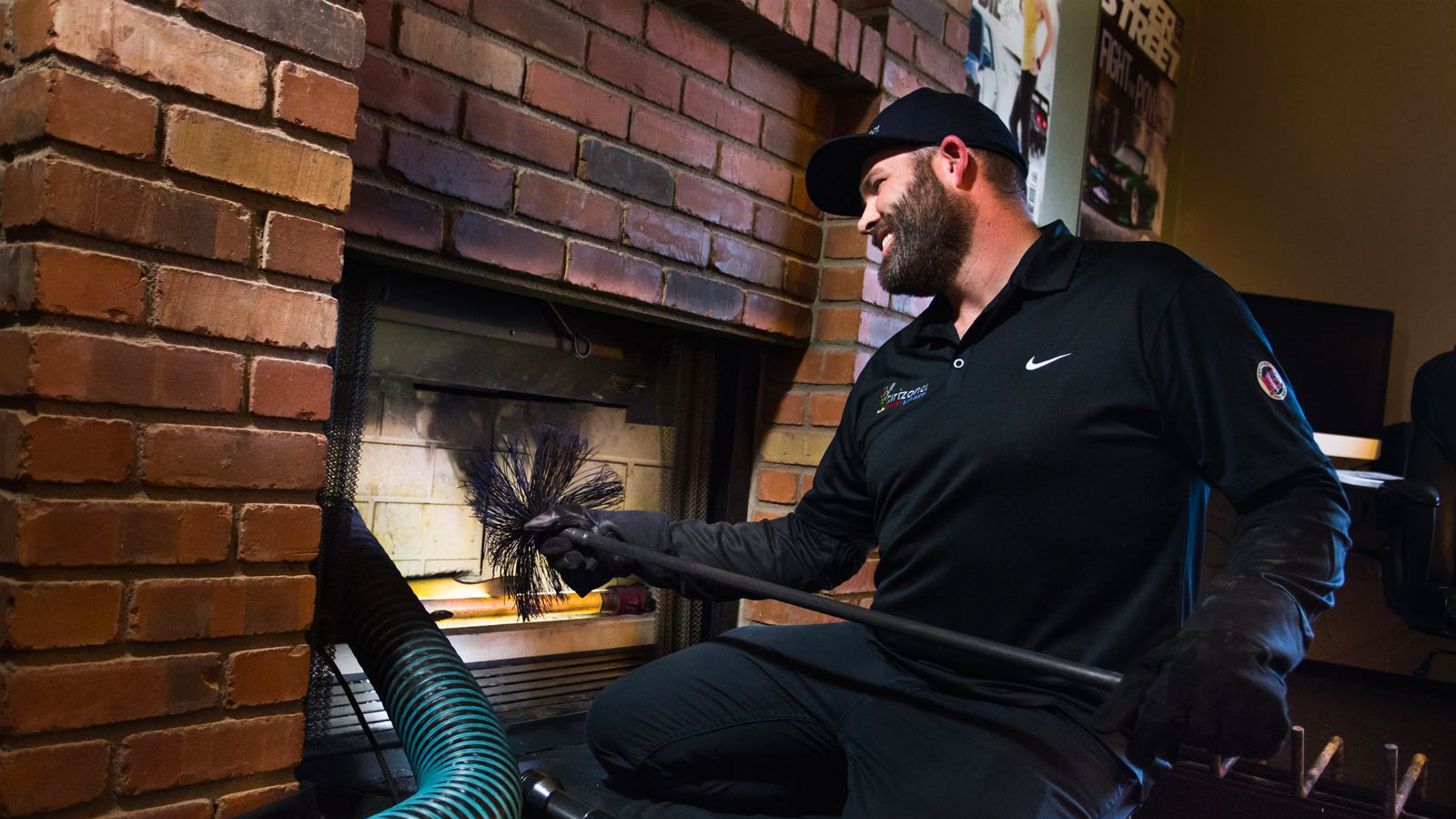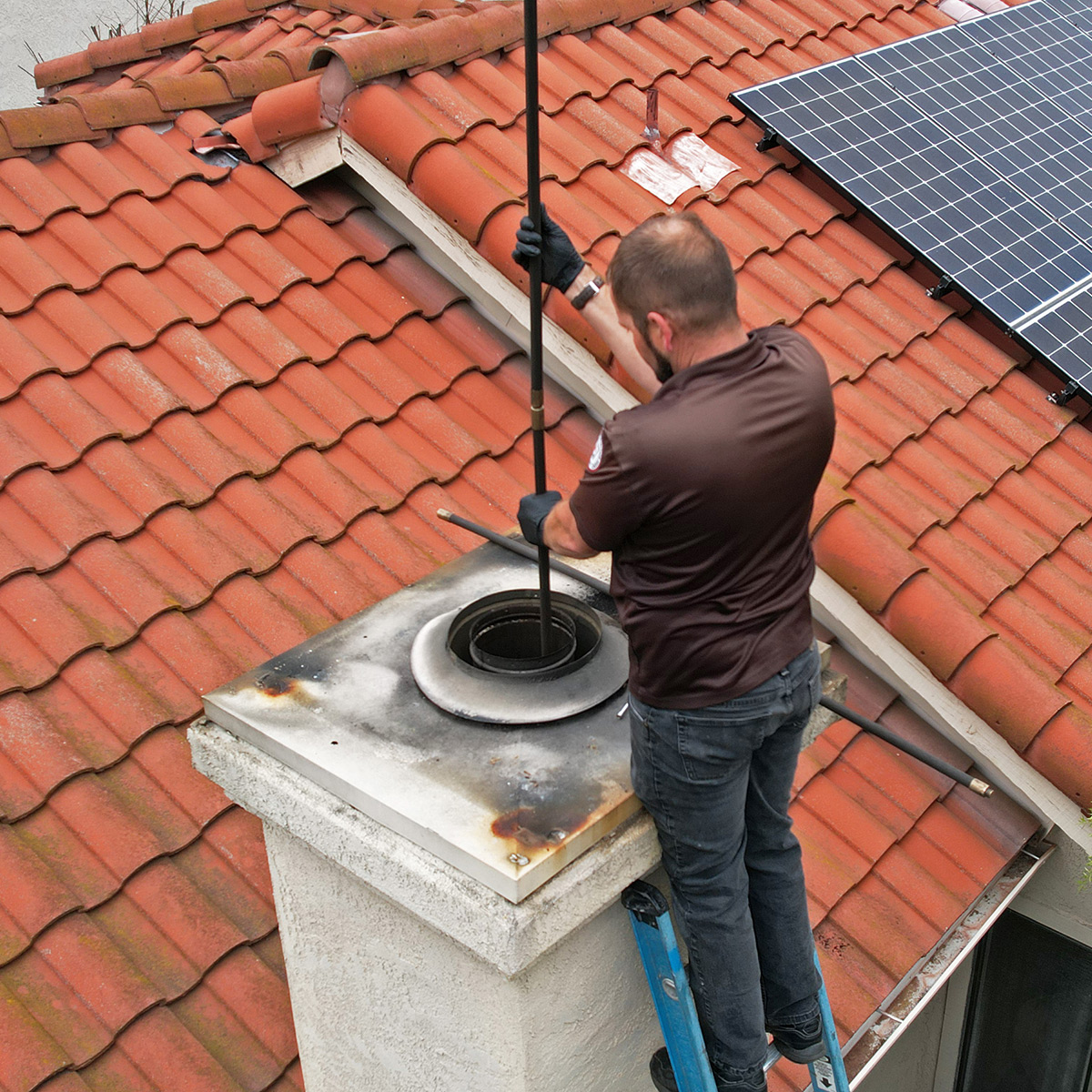Safe: Chimney Clean San Jose Specialists at Your Solution
Safe: Chimney Clean San Jose Specialists at Your Solution
Blog Article
Smokeshaft Cleaning: A Step-by-Step Overview to Preserving a Healthy And Balanced Fire Place
Preserving a healthy and balanced fireplace is vital for the safety and efficiency of your home. Regular chimney cleansing is a vital part of this upkeep routine. In this step-by-step guide, we will supply you with detailed guidelines on just how to properly cleanse your smokeshaft, making sure that it operates ideally and minimizes the threat of fire hazards. By following these guidelines, you will discover just how to gather the necessary tools, do an aesthetic evaluation, clear debris and build-up, sweep the smokeshaft, and complete the last steps for continuous maintenance. With an expert technique and focus to detail, you can confidently take treatment of your fire place and appreciate its heat and convenience for many years to come.
Collecting the Required Tools
To start the process of smokeshaft cleansing, the primary step is to collect all the essential devices. Having the right devices handy guarantees a efficient and secure cleaning process. The necessary tools for chimney cleansing consist of a smokeshaft brush, a ladder, ground cloth or plastic sheets, a flashlight, handwear covers, and a dust mask.
The chimney brush is the primary device utilized to eliminate soot and creosote accumulation from the flue. It is necessary to pick a brush that matches the shapes and size of your chimney. Furthermore, a tough ladder is necessary to access the chimney securely. Ensure the ladder is secure and put on a level surface area.
A flashlight is necessary for inspecting the chimney's interior for any type of indications of damage or blockages. Handwear covers are essential to safeguard your hands from soot and various other dangerous substances, while a dirt mask helps stop the breathing of particles.
Carrying Out an Aesthetic Evaluation

Utilizing a flashlight, meticulously check out the indoor walls of the chimney for any kind of indicators of damage, such as fractures, loosened bricks, or mortar wear and tear. These problems can endanger the chimney's structural integrity and posture a major security risk. In addition, check for any indications of water damages, such as staining or efflorescence, as this can indicate a leaking chimney cap or blinking.
Following, examine the chimney flue for any blockages. Try to find the presence of nesting products, leaves, or debris that may have collected in time (Chimney Sweep San Jose). These obstructions can limit air flow, boost the threat of carbon monoxide gas accumulation, and prevent the smokeshaft's ability to successfully vent smoke
Throughout the visual evaluation, pay close attention to the chimney crown, which is the top surface area that shields the smokeshaft from dampness. Try to find splits or missing pieces in the crown, as these can enable water to get in the chimney and cause considerable damages.
Clearing Up Debris and Build-up
After completing the aesthetic evaluation, the next action in smokeshaft cleaning involves clearing particles and build-up to guarantee the proper functioning of the fireplace. Gradually, particles such as fallen leaves, twigs, and animal nests can collect in the chimney, obstructing the circulation of air and creating prospective fire threats. Additionally, the accumulation of creosote, a tar-like compound, is a common trouble in smokeshafts. Creosote is created when timber or fossil fuels are burned, and if not removed on a regular basis, it can bring about chimney fires.
A chimney brush, specifically created for this function, is made use of to get rid of loosened debris and creosote from the smokeshaft walls. It is important to choose a brush that matches the size of your chimney to guarantee reliable cleaning.
To begin, insert the brush into the chimney and relocate it up and down, scrubbing the walls to displace any kind of particles or creosote. As soon as the brushing is full, utilize a vacuum cleaner or a chimney brush extension to eliminate the dislodged debris from the fire place.

Brushing Up the Chimney
The sweeping of the chimney is an essential step in keeping a healthy and balanced fireplace. Gradually, residue, creosote, and various other particles can gather in the chimney, obstructing the circulation of air and potentially triggering a hazardous buildup of flammable materials. Normal smokeshaft sweeping not only you could try here makes sure correct air flow however additionally avoids the threat of smokeshaft fires.
When it comes to chimney sweeping, it is extremely recommended to employ a specialist chimney move. These specialists have the knowledge and devices essential to safely and efficiently eliminate the gathered particles from your chimney.
It is essential to note that the regularity of chimney sweeping depends upon numerous aspects, such as the kind of gas utilized, the quantity of use, and the sort of chimney. As a general guideline of thumb, it is recommended to have your over at this website smokeshaft swept and examined at the very least as soon as a year.
Last Steps and Upkeep
To make sure recurring maintenance and ideal performance, it is important to implement regular upkeep techniques and adhere to a thorough collection of final actions for your fire place. After completing the chimney sweeping procedure, the primary step in the final upkeep is to examine the chimney cap and trigger arrestor. These parts prevent debris, pets, and rainwater from going into the smokeshaft. Inspect for any kind of indicators of damage or obstruction, and clean or fix them if required.

Examine the within the fireplace for any type of indications of deterioration, such as fractures, loosened blocks, or harmed mortar. These problems can affect the architectural integrity and safety and security of the fire place. If any type of problems are identified, speak with a professional chimney sweeper or mason to resolve them promptly.
Ultimately, consider installing carbon monoxide gas detectors near the fire place and throughout your home. These gadgets can identify the visibility of this harmful gas, giving an early caution system in situation of a smokeshaft malfunction. Routinely check and change the batteries in these detectors to ensure their efficiency.
Final Thought
Finally, complying with pop over to these guys a detailed overview for chimney cleansing is crucial in maintaining a healthy fireplace. By collecting the essential tools, performing a visual inspection, getting rid of debris and accumulation, and brushing up the smokeshaft, house owners can ensure the safety and effectiveness of their fireplace. Routine upkeep and cleaning will help stop chimney fires and improve air quality in the home. It is necessary to focus on chimney cleansing as a part of overall home maintenance.
The necessary tools for smokeshaft cleansing consist of a chimney brush, a ladder, decline cloths or plastic sheets, a flashlight, handwear covers, and a dirt mask.
A chimney brush, specifically made for this objective, is used to eliminate loose debris and creosote from the smokeshaft walls. Regular chimney brushing up not just guarantees correct air flow however also prevents the danger of smokeshaft fires.
When it comes to smokeshaft sweeping, it is extremely suggested to hire a professional smokeshaft sweep. After completing the chimney sweeping process, the very first action in the final maintenance is to examine the chimney cap and stimulate arrestor.
Report this page